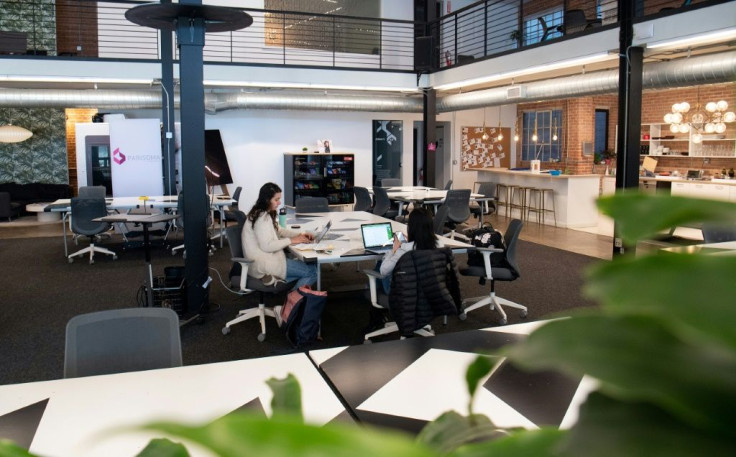Americans Drinking Alcohol While Working From Home? New Poll Shows The Effects Of Coronavirus

KEY POINTS
- The highest percentage of drinkers were in North Carolina and the lowest in Arkansas
- It's estimated 66% of U.S. workers are now working from home
- 54% said they are fearful of layoffs
Working from home has forced a large percentage of America’s workforce to make major adjustments – and, apparently, it’s driving nearly half to drink.
Of the total U.S. workforce, 29% could work from home, the Bureau of Labor Statistics estimates. Until the coronavirus pandemic hit, only about 7% of American workers actually did. Now, 66% do, a survey by Clutch indicated.
More than 40% of people working from home say they drink while on the job, with the greatest percentages in the advertising and marketing industry, a survey by Fishbowl indicated Tuesday. Of the 12,895 people queried, 41.79% admitted taking a nip or two while at work with nearly half of advertising and marketing agency employees (49.14%) admitting to indulging.
Millions of people are working from home to help prevent spread of the coronavirus, the vast majority for the first time, and the stress has been tremendous.
Some 54% of those queried said they fear layoffs, and 60% said clients had canceled or paused projects. Sixty-two percent of parents said they are finding it difficult to juggle work and childcare while teachers said less than half of their students are showing up for online classes. And 31% said they miss interaction with coworkers.
Fishbowl, and anonymous workplace social network, asked respondents, “Do you ever drink alcohol while working from home?”
North Carolina residents had the highest percentage of drinkers, 47.7%, followed by Oregon at 47.58%, Connecticut at 47.41%, Colorado at 46.93% and Washington at 46.3%. The lowest percentage of drinkers were in Arkansas, 28.85%, followed by New Jersey, 32.94%, Virginia, 35.47%, Michigan, 37.83% and Missouri 37.96%.
The Clutch survey released last week indicated workers are nearly evenly split over whether they’d rather work from home or work in an office, 40% vs. 39%. Forty-seven percent said they don’t miss the commute, 43% approved of having a more flexible schedule and 33% were happy they didn’t have to dress up.
Difficulty in collaborating, frequent interruptions and trouble sticking to a routine were the three biggest drawbacks, Clutch said.
© Copyright IBTimes 2025. All rights reserved.






















